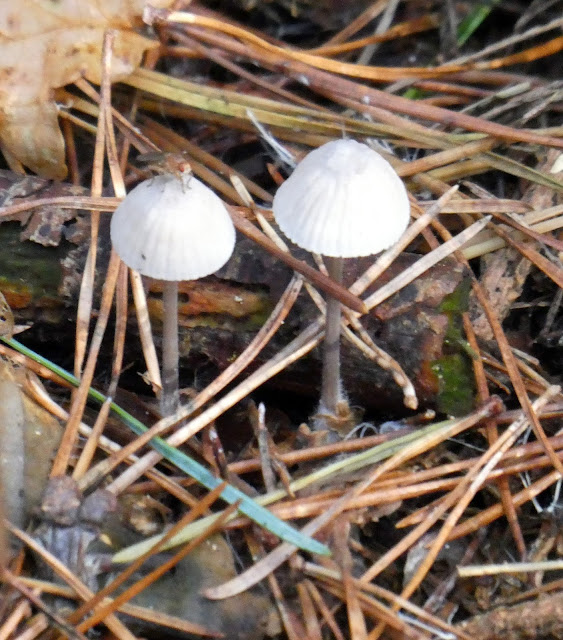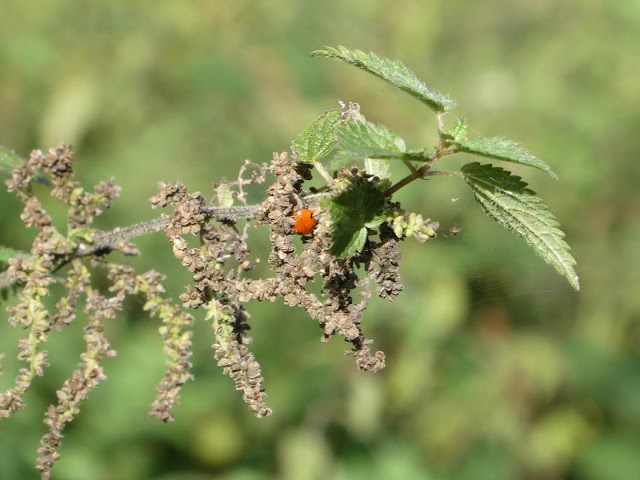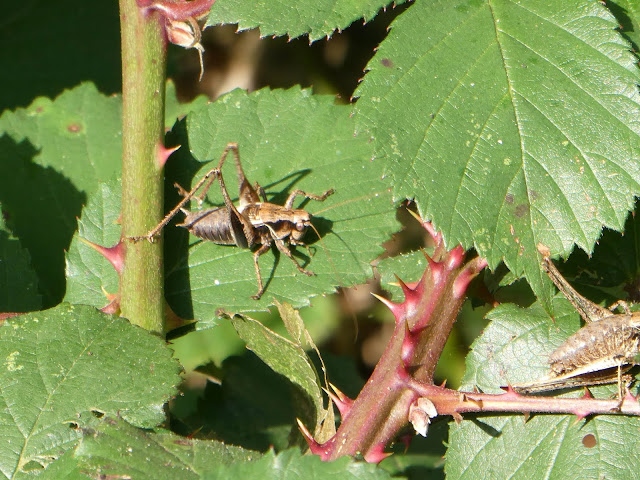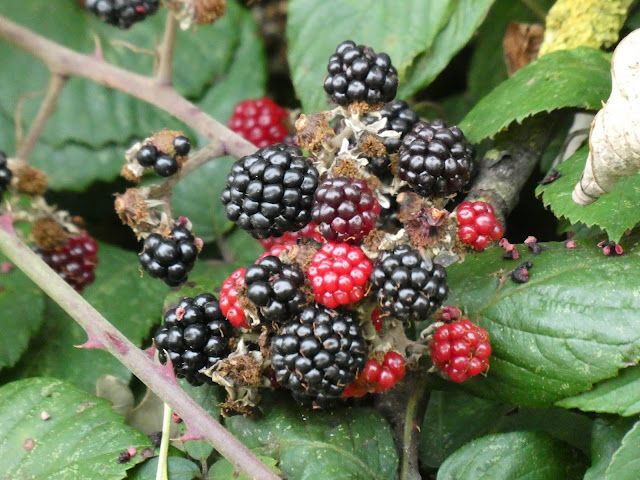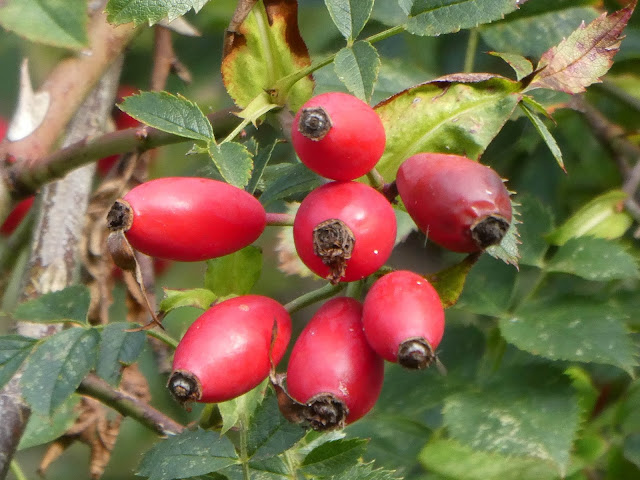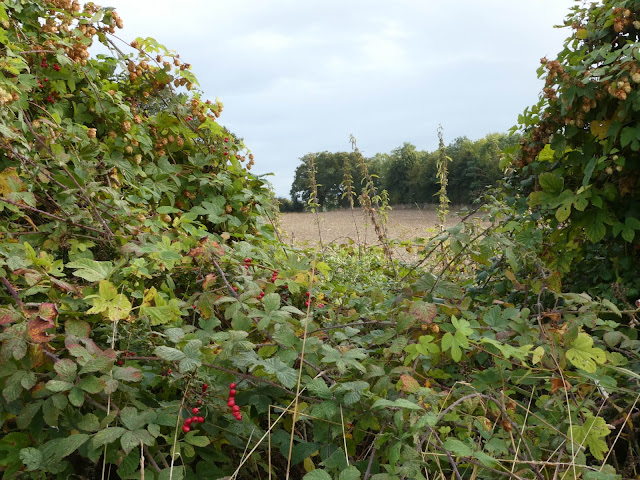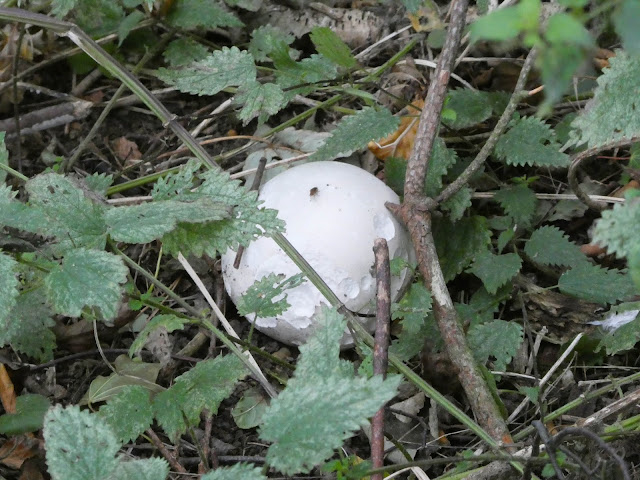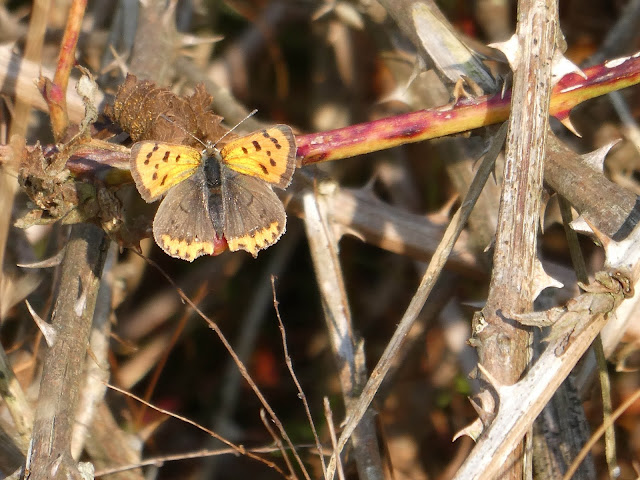We took a picnic to NT Dunwich Heath last weekend, hoping that perhaps there would be a few breaks in the cloud.
You can see our picnic spot in the photo above. The white building is made up of old coastguard cottages. I took this picture with my back to the sea.
I love the archway above and have never noticed it before. The weather was overcast initially, but by about 2pm, the sun had broken through and we were able to watch a few damsels and dragons in the sheltered corners.
As we peered into the water beneath the decking, our eyes alighted on two Great Diving Beetles. I was reminded of the giant water-beetle in The Tale of Mr. Jeremy Fisher by Beatrix Potter.
David had his measuring card on him, so we were able to see if the beetles were three centimetres in length, the size of a Great Diving Beetle. We reckoned they were pretty well spot on, despite the fact that the remaining beetle's head had dipped down by this time.
There were good numbers of Ruddy Darters; most, but not all (see below), were on the wing. The one in the photograph had rather ragged wings.
The dragons in the next photo were certainly making their presence felt!
We saw two Migrant Hawkers during the course of the afternoon (see above, first photo in this post), both hanging from their respective branches of twigs. They both had a blue aura about them, possibly a trick of the low light, but I think they are Migrant Hawkers as both displayed the characteristic yellow golf-tee mark.
I have seen very few damsels this year, so was delighted to find the Emerald Damselfly (update, 29 Sept. 2021: please see comments where Conehead54 has informed me that this is actually a Willow Emerald) in the photo below).
The damselfly in the next two photos was a very obliging subject.
We found the sandy bank home of some Red-banded Sand Wasps. You can just about make out the pockmarks in the exposed part of the ridge. The photos below show one of the wasps entering the nest.
I had not expected the heather to be turning brown so soon, but there were still some small patches where most the flowers were still in bloom. I have always enjoyed seeing heathland, whether in Suffolk or Cornwall, alight with the pink of the heather and the golden glow of gorse.
We were soon back at our starting point by the coastguard cottages, staring out at the ocean. As you can see, there was no need for any social distancing down below on the shore!

Since last Saturday when these photographs were taken, the weather has turned much more autumnal, which is perhaps not surprising since we are now several days past the Autumn Equinox. I can hear lashing rain outside my window as I type, and I suspect it may be many months before we see scenes like the one below again.
